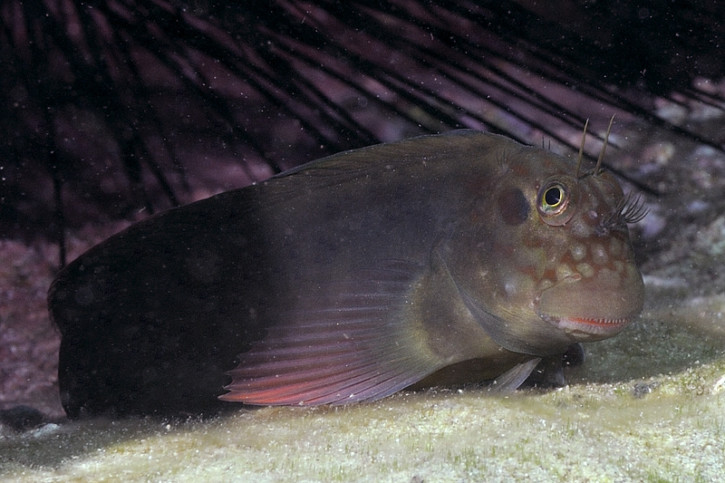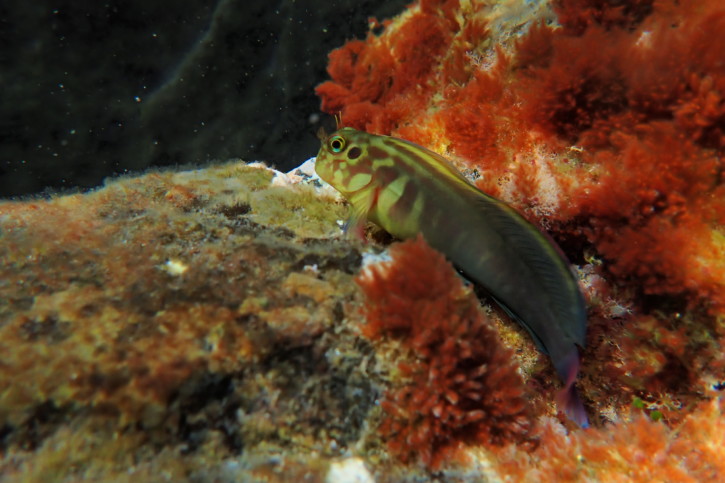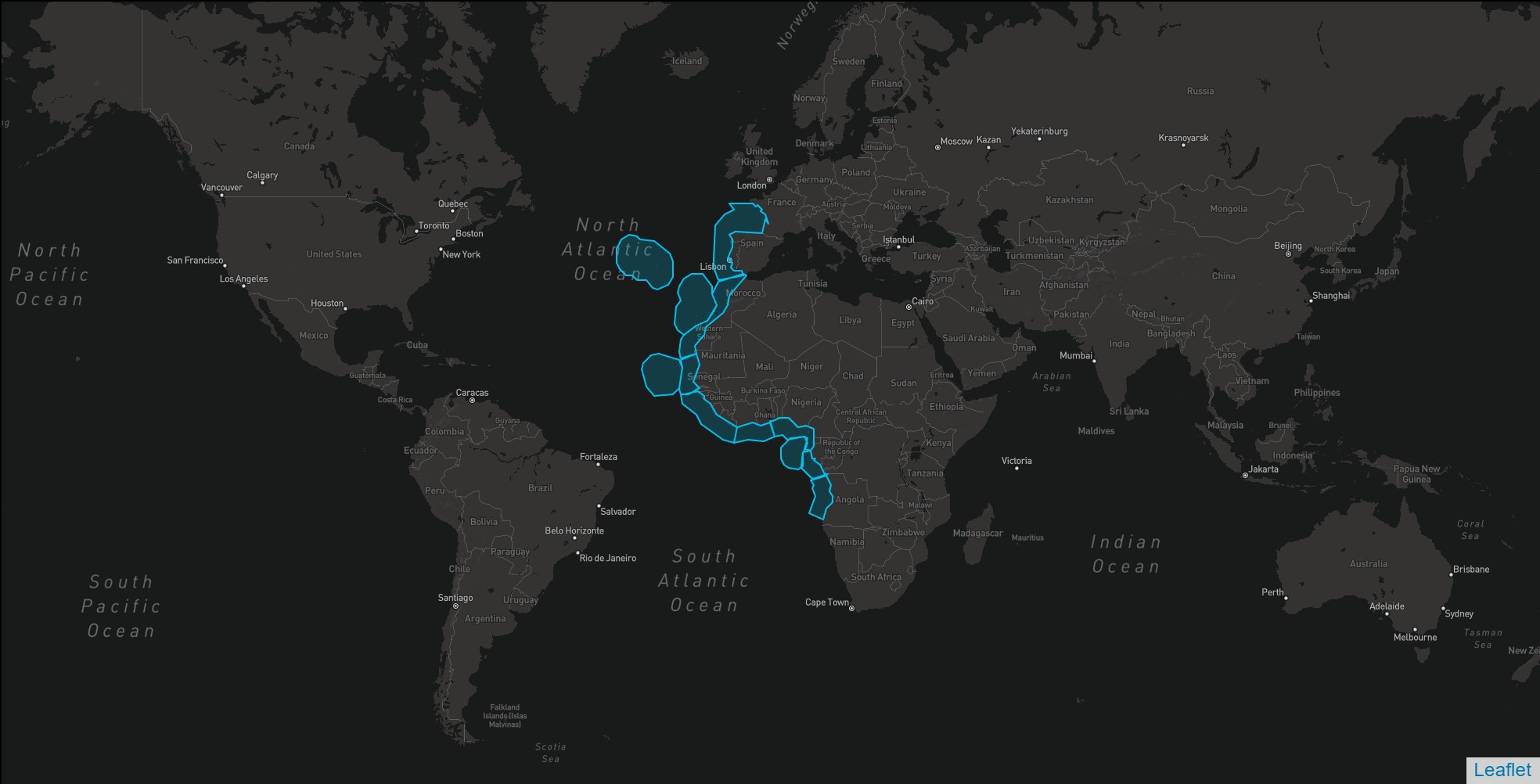redlip blenny
| Family | Blenniidae |
|---|---|
| Genus | Ophioblennius |
| IUCN category (World) | LC |


Introduction
Ophioblennius atlanticus, commonly known as redlip blenny, is a salt water fish.
This sheet is currently being prepared. The texts currently proposed come from our data model or are being drafted. To request priority for this content, you can write to us HERE.
Who is it?
Morphology
-
Average size15 cm
-
Maximum size19 cm
-
Average size15 cm
-
Maximum size19 cm
How to recognize This fish ?
The redlip blenny measures between 15 and 19 cm. This fish is unicolore with a predominantly noir body.
Behaviour & Life cycle
-
dietomnivorous
-
Sociabilitysolitary
-
territorialYes
-
Way of livingdiurnal
The redlip blenny is a fish solitary naturally found near the bottom. This species is omnivorous .
This species is territorial and does not appreciate the presence of intruders nearby, especially animals with similar behavior. It can also be virulent toward conspecifics. However, the redlip blenny has little concern for non-territorial animals. In a constant quest for dominance, the dominant males of this species cannot stand each other. The battle between two individuals can be intense and violent. It will result in the submission and sometimes even death of one of the protagonists.
Reproduction
-
Reproductionovipare qui pond sur substrat caché
The redlip blenny is a fish ovipare qui pond sur substrat caché.
Harmless species
This species does not represent any particular threats to humans when encountered in its natural environment.
Origin and distribution
Conservation status of populations (IUCN)
What is its habitat?
Natural environment characteristics
-
Depth0 - 50 m
-
FlowStrong and Medium
Biotope presentation
The redlip blenny is most often found at a depth between 0m and 50m. However, it is not impossible to find this species at other depths.
To go further
Sources & Contributions
Participation & Validation
The Fishipedia team and specialist contributors are committed to providing high-quality content. However, although the information comes from scientific sources or testimonials from specialists, the cards may contain inaccuracies.

Aurélien Calas
Translation
Translation done with the valuable contribution of our translators, who make this information available to a wider audience. We sincerely thank them for their commitment.
Scientific partners
Tags
Species of the same family
























